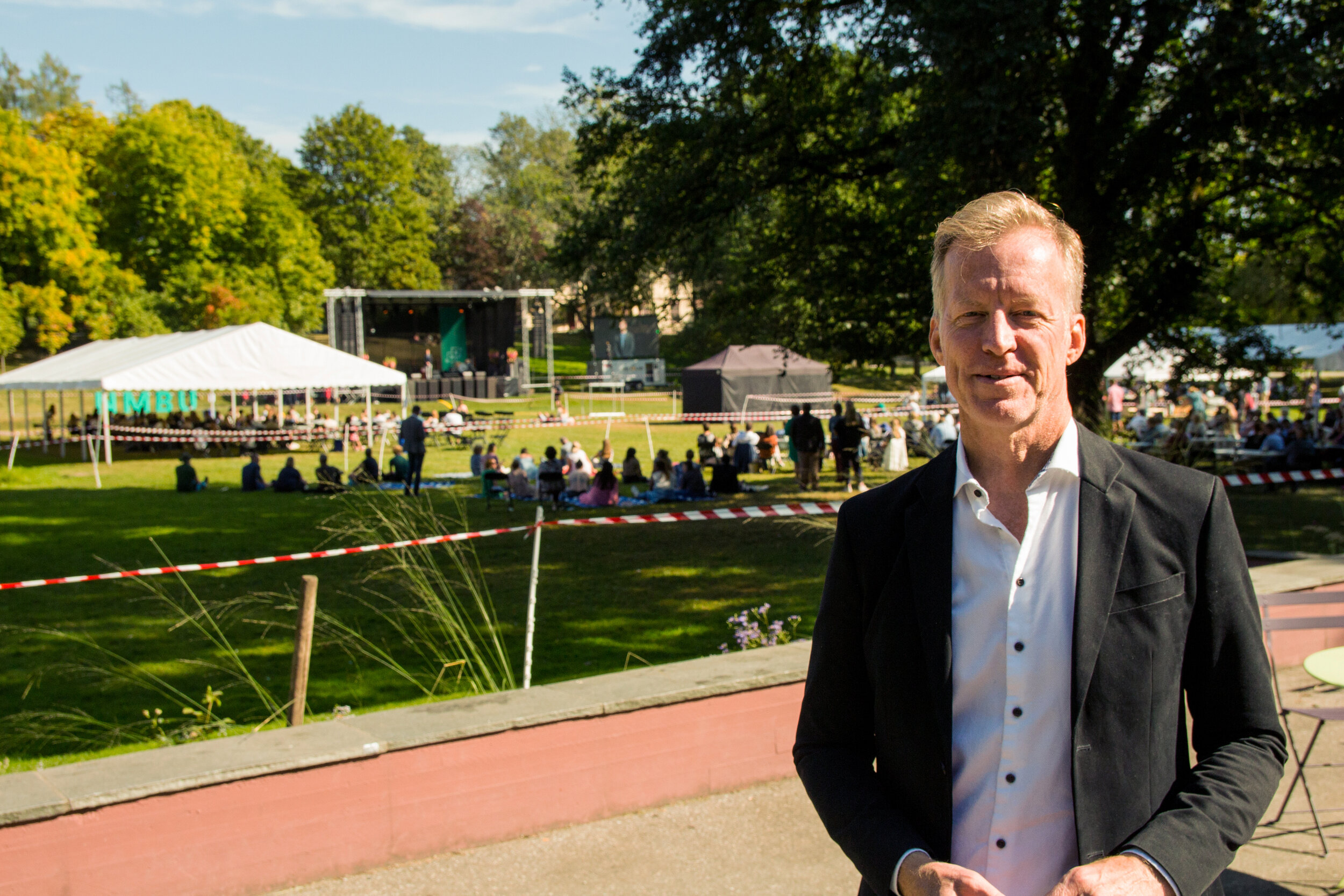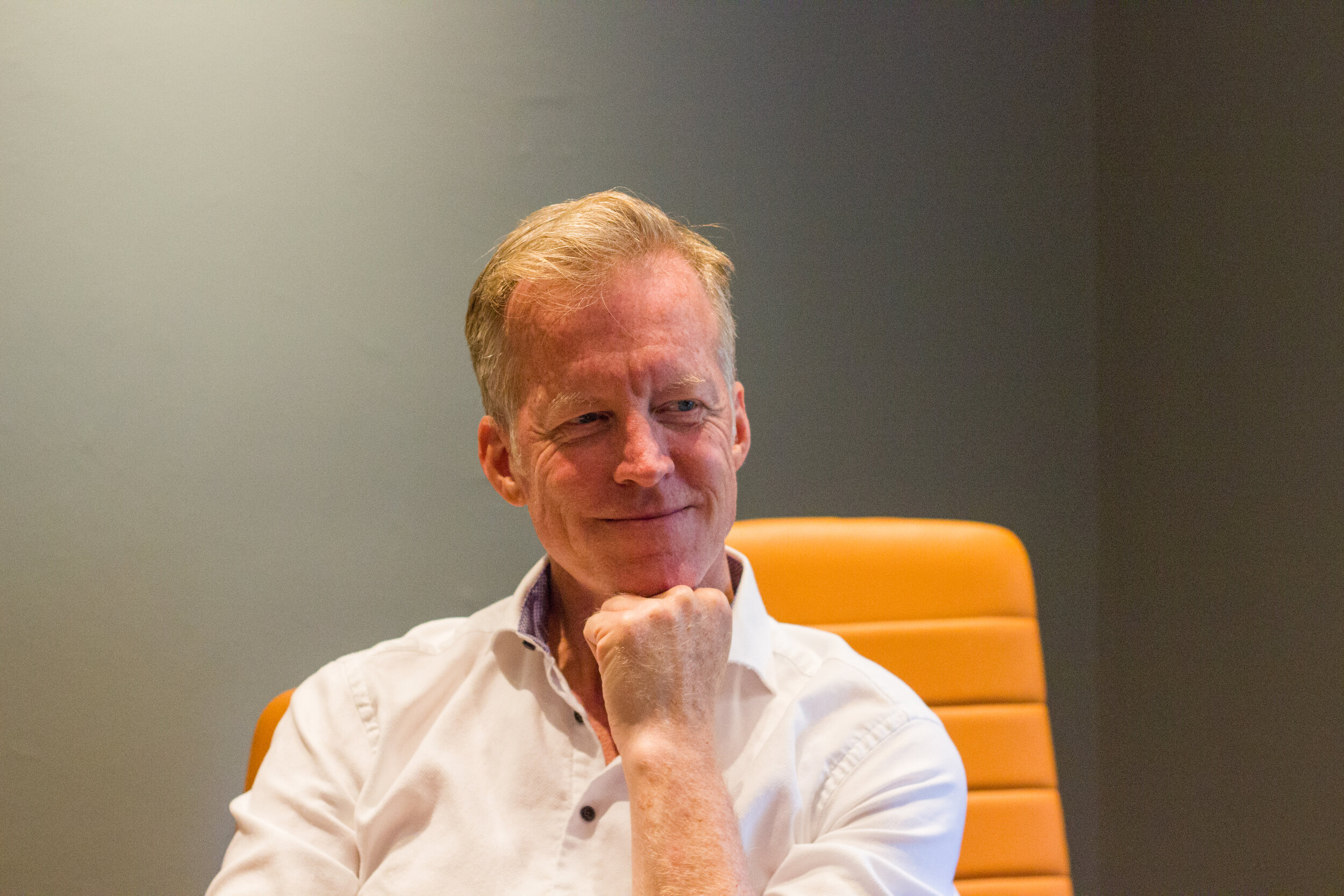New year, new rector: Tuntreet has a chat with Curt Rice

New year, new rector: Tuntreet has a chat with Curt Rice
Once again NMBU has a new rector, this time in the shape of an American with a dialect from northern Norway. So, who exactly is this guy? What are his duties? What challenges does he face? And how does he feel about being as fresh here as our freshmen?
Journalist: Tord Kristian Fjellheim Andersen
Translator: Aleksander Mæland Munkejord
Photographer: Simen Walbækken Tangen
Life before Ås
I begin by asking about Curt’s background, and after a short pause for thought, he reveals that right about now he has been living in Norway for 30 years. The fact that he first arrived here in the 90’s is rarely evident from his dialect. After finishing his doctorate in linguistics in his home country, he was hired by the University in Tromsø (UiT). The intention was to stay there for one year, but destiny wanted it another way. After a while, he was leading UiT’s Centre of Excellence (SFF), in which he found a lot of joy. After this position, he was elected pro-rector in 2008. A few years later, he became rector of the Oslo and Akershus University College, currently OsloMet.
The hiring process
The 5th of May, the University Board announced their decision of hiring Curt Rice as the new rector of NMBU. It had been no simple process. There were lots of interviews, personality tests, IQ tests and astrology tests, Curt explains, smiling. He remains shy when asked about who contacted him first. Accepting this job offer meant that he had to cancel his tenure at OsloMet, the university he helped rebranding. Curt commenced his new tasks on the 1st of August, but which ones does he consider the most important?
Cultural development
I am told that Curt has three main tasks to fulfill.
NMBU is to be the university of sustainability. It should be impossible to think about NMBU without thinking about sustainability.
Academic integration. Veterinarians and the rest of Campus will be integrated together, not one into another. This will also provide better interdisciplinarity within research.
A visible institution. Convey all the fantastic stuff that happens at NMBU.
For the last point, in particular, Curt expresses a certain frustration. He mentions the lack of media coverage of NMBU, not to mention how often the name is misspelt. Examples are “The Norwegian Environmental and Biotechnical University”, “The Norwegian Natural and Environmental-Scientific University”. “I have received a lot of flak for the name OsloMet, but at least people get it right”. Why NMBU often scores low on the international rankings, Curt thinks is due to a lack of awareness about the institution. When we ask Curt to bring the three points under a single heading, he likes to call it Cultural Development.
Curt, the foreign fighter
Our new rector has a great task ahead of himself, but he does not really have the typical background that one would expect from one that is going to lead an institution described as environment- and bio-scientific. “I will never master everything”. Both regarding our fields of study and the history of our institution, he is conscious and clear on the fact that those are other people’s expertise. “I will do my best, to learn as much as possible about NMBU”. Above all, he would like to emphasize that he is really motivated to accomplish this. When I ask him how he is supposed to support research and students within a completely different field of study, he responds the following: “NMBU, in English, is called ‘The Norwegian University of Life Sciences’, and I would argue that linguistics is a life science. Linguistics is about psychology, and when it comes down to it, psychology is really just biology. From my point of view, and how I see my field of work, I like to think that linguistics is among the few life sciences that are placed in humanistic institutes.” Anyways, Curt emphasizes that the methods of research are what matters; supporting the researchers, and making sure that we are conducting morally sound research, with trustworthy results. This is clearly something that spans across the borders of the different fields of study.
FIVE QUICK ONES
1. What’s on your nightstand? – At the moment, a popular-scientifical book called “Noise”.
2. Are you going pilsing at the Bodega this year? – Probably not, I don’t drink beer. A fine gin and tonic is not out of the question.
3. Pilsner or bayer? – NO
4. What’s NMBU’s next name? – Perhaps “The World’s University of Life Sciences”?
5. How do you feel about selfies and Instagram? – Selfies are fine, but I don’t like Instagram. I’m rather a grumbler on Twitter.
Curt in Ås
Being new in Ås has been a great upheaval. It is a change in location, field of work, and culture. Nevertheless, Curt is pleased to meet the people in Ås. “I have been greeted with a heartwarming generosity”. His only complaint is having less time for working out. You see, Curt loves working out. “I like weightlifting, walking, jogging, cycling...”. Curt lives close to OsloMet, so spending two hours every day commuting has impacted his amount of training, negatively. However, he has no immediate plans of moving to Ås. “I keep an eye on the housing market». There is no hiding that this is not your typical nine-to-five job situation.
The future
During his very short amount of time in Ås, a lot has happened. How has it been, finally having the veterinarians together with the rest of the campus? “Creating an opportunity space of 63000 sqm... It can only be great. Anything else is inconceivable”. Curious about the fact that Curt has moved around a bit earlier, I finally ask him the question of whether he considers himself hired to complete the aforementioned tasks, or if he is planning to stay here. He makes it crystal clear: ”I intend to fulfil my days here at NMBU, I will spend a lot of years on those tasks.” Tuntreet waits in excitement. Best of luck!



